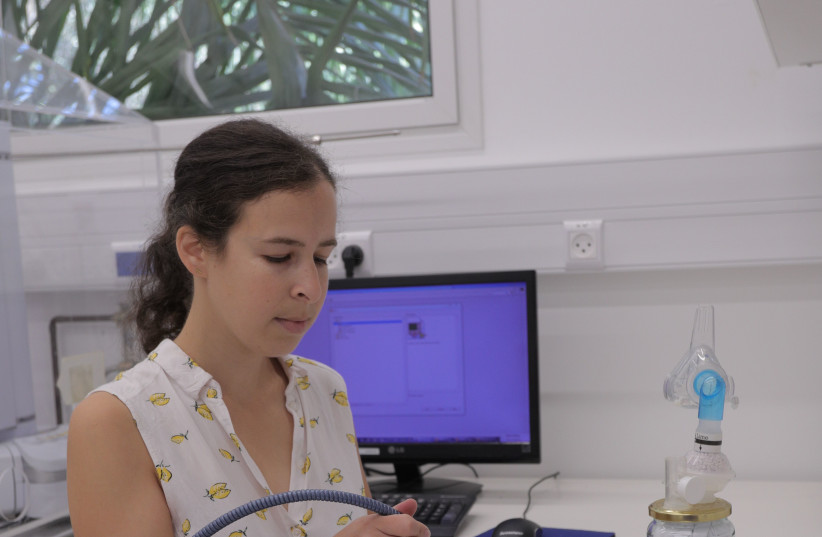Anyone who has ever walked a dog knows that their pet can usually tell from a distance whether an approaching dog is a friend or an enemy. When in doubt, upon encountering one another, the two canines might carefully sniff each other before deciding whether to play or fight.
Indeed, the importance of the sense of smell in social interactions has been widely documented in all land-living mammals – except for humans. Is this because humans don’t use their noses in social settings the way all other terrestrial mammals do or is this behavior not as overt in people?
The research itself
New research at the Weizmann Institute of Science in Rehovot has discovered that people may have a tendency to form friendships with individuals who have a similar body odor.
The researchers were able to predict the quality of social interactions between complete strangers by first “smelling” them with a device known as an electronic nose (eNose).

These findings – recently published in Science Advances of the American Association for the Advancement of Science under the title “There is chemistry in social chemistry” – suggest that the sense of smell may play a larger role in human social interactions than previously thought.
Graduate student Inbal Ravreby, working in Prof. Noam Sobel’s lab in Weizmann’s Brain Sciences Department, suggested that the latter is the case.
She relied on two previous observations – that several lines of evidence suggest that humans are constantly, although mostly subconsciously, sniffing themselves and that humans often subconsciously sniff other people.

People seek the familiar
It’s also known that people tend to become friends with others who are similar to themselves. Some of the known similarities that predict friendships are age, race, education, religion and physical appearance, the researchers wrote.
“There are also more complex similarities such as personality and values and even in patterns of neural activity and genetic makeup,” they said.
Ravreby hypothesized that when subconsciously sniffing themselves and others, people may be making subliminal comparisons and then gravitate toward those whose smell is similar to their own.
Friendships are forever
Human, same-sex non-romantic friendships are a critical pillar of psychological health. Such friendships can develop slowly over time, but occasionally, in so-called “click friendships,” a strong sense of bonding can form almost instantaneously.
To test her hypothesis, Ravreby recruited pairs of click friends. She hypothesized that because such friendships emerge prior to an in-depth acquaintance, they may be particularly influenced by physiological traits such as body odor.
From smelling samples to friendship trends
She then collected body odor samples from these pairs of friends and conducted two sets of experiments to compare the samples with those collected from random pairs of individuals. In one set of experiments, she performed the comparison using the eNose, which assessed the chemical signatures of the odors.
In the second set of experiments, she asked volunteers to smell the two groups of body odor samples to assess similarities measured by human perception. In both types of experiments, click friends were found to smell significantly more like each other than did the individuals in the random pairs.
Ravreby then wanted to rule out the possibility that body odor similarity was a consequence of click friendships, rather than a contributing cause.
For example, what if the friends had a similar smell because they ate the same types of food or shared other life experiences that influence body odor?
To deal with this issue, Ravreby performed an additional set of experiments, in which she used an eNose to “smell” a number of volunteers who were complete strangers to one another and then asked them to engage in nonverbal social interactions in pairs.
The conclusion
After each such structured interaction, the participants rated the other individual in terms of how much they liked that person and how likely they were to become friends.
Subsequent analysis revealed that the individuals who had more positive interactions indeed smelled more like each other, as determined by the eNose.
In fact, when Ravreby and statistician Dr. Kobi Snitz entered the data into a computational model, they were able to predict with 71% accuracy which two individuals would have a positive social interaction based on eNose data alone.
In other words, body odor appears to contain information that can predict the quality of social interactions between strangers.
“These results imply that, as the saying goes, there is chemistry in social chemistry,” Ravreby concluded.
“These results imply that, as the saying goes, there is chemistry in social chemistry.”
Weizmann graduate student Inbal Ravreby
Sobel, who is head of the Azrieli National Institute for Human Brain Imaging and Research, cautioned, however, that “this is not to say that we act like goats or shrews – humans likely rely on other[s], far more dominant cues in their social decision-making. Nevertheless, our study’s results do suggest that our nose plays a bigger role than previously thought in our choice of friends.”
